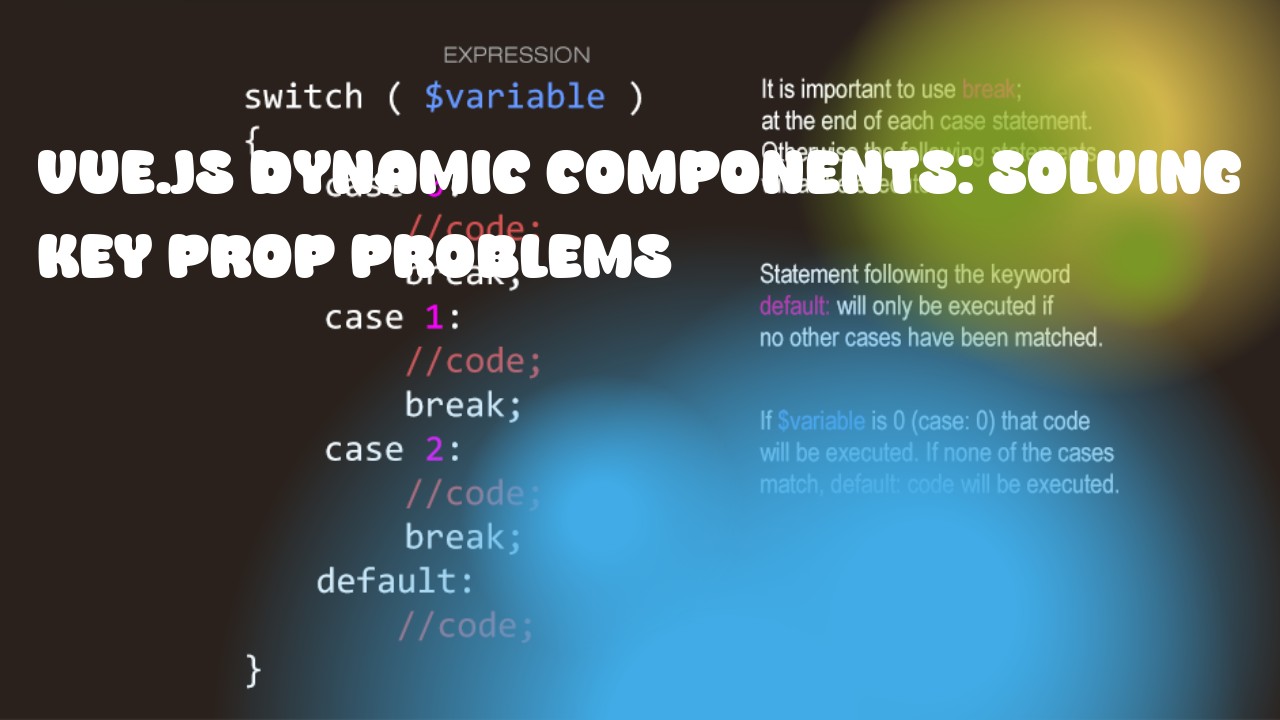In Vue.js, dynamic components allow you to dynamically switch between different components based on certain conditions or variables at runtime. This can be a useful feature when building complex applications with multiple views that change depending on the user's interactions or data.
One common problem developers encounter when working with dynamic components in Vue.js is the key prop issue. The key prop is used to help Vue.js identify which child component has changed, been added, or been removed from the DOM. When a component is created, updated, or removed, Vue.js needs a unique identifier called a key to compare it with its previous state and make the necessary updates to the DOM.
However, if you don't specify a key prop when using dynamic components, Vue.js will default to using the component's instance index as its key. This can lead to unexpected behavior because two instances of the same component might not be treated as identical by Vue.js, even if they are semantically equal.
To solve this problem, you should always include a unique key prop when using dynamic components. A good rule of thumb is to use a string that uniquely identifies each instance of the component based on its props or context. This can help ensure that Vue.js treats each component instance correctly and makes the necessary updates to the DOM.
Here's an example of how you might use dynamic components with keys in Vue.js:
<template>
<div>
<component :is="currentComponent" :key="currentComponent" />
</div>
</template>
<script>
export default {
data() {
return {
currentComponent: 'Foo',
};
},
components: {
Foo: {
// ...
},
Bar: {
// ...
},
},
};
</script>
In this example, the currentComponent data property determines which component to render. We've added a key prop set to currentComponent, which ensures that Vue.js treats each instance of Foo or Bar correctly when switching between them.

